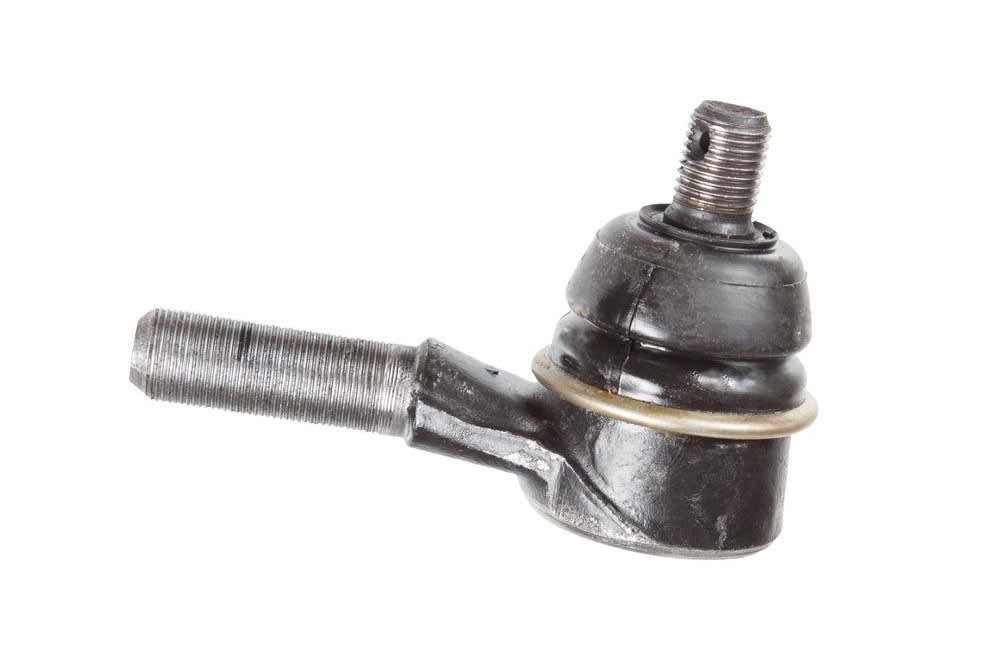

When you drive, you expect your wheels and tires to stay straight unless you turn the steering wheel. That is maintained by several components in the suspension system. Whether you have a truck, SUV, or commuter car, they all have tie rod ends that attach to the wheel housing and ensure your vehicle has a smooth and efficient ride every day. However, this component is subject to extreme wear and tear due to the fact that it's used continually as the vehicle is in motion. When it wear out or fails, you'll notice a few warning signs that should be inspected by a certified mechanic and replaced if needed.
As the name implies, the tie rod end is attached at the tip of the tie rod and connects the wheels of the vehicle with the steering and suspension components that permit the vehicle to steer. Tie rod ends can wear out due to impact, constant use on bumpy roads, or simple age. Frequently, the part that wears out in the tie rod end is actually the bushing. However, it's advised that you replace the tie rod end completely as metal fatigue can also cause the part to fail. If you have the tie rod ends replaced, it's critical that you remind the mechanic to complete a front end alignment, which will set your wheels to point straight.
Like any other mechanical part, a worn out tie rod end will display a few warning signs or indicators that the part is failing and needs to be replaced. Listed below are a few of these symptoms. If you notice any of these, contact a mechanic as soon as possible so they can properly diagnose the problem and take corrective action to replace what might be broken.
1. Front end alignment is off
One of the primary jobs of the tie rod end is to keep things solid on the front end of your vehicle. This includes the tie rod, wheels and tires, stabilizer bars, struts, and other components that all factor into the vehicle’s alignment. When the tie rod is worn down, it will become loose and will cause the front end of the vehicle to fall out of alignment. This is easily noticed by the driver as the vehicle will drift to the left or right when the vehicle is pointed straight. If you notice that your car, truck, or SUV is pulling in one direction, it may be a loose or worn out tie rod end that is causing the problem.
2. Steering wheel shakes or feels loose
As indicated above, the tie rod end is designed to make sure everything is solid in the suspension. When it wears out, it tends to bounce or have some play in the tie rod end. As a vehicle accelerates, this play or loose condition will cause a vibration to set in that is noticed in the steering wheel. Typically a tie rod end that is wearing out will begin to vibrate at speeds as low as 20 mph and gradually increase as the vehicle accelerates.
This may also be an indication of a tire/wheel combination that has fallen out of balance, a cupped tire, or another suspension component that is broken. If you notice this symptom, it's important to have a mechanic inspect the entire front end to determine the precise cause of the issue and replace the parts that are causing the problem.
3. Uneven and excessive tire wear
Tire inspections are often completed by a tire center or oil change service station. However, you can easily complete a visual inspection of your tires to determine if they are wearing unevenly. Simply stand in front of your vehicle and look at the edges of the inside and outside of the tire. If they appear to be evenly worn, this is a good sign that your tie rod end is functioning correctly. If the tire is worn excessively on the inner or outer portion of your tire, this is a warning sign that the tie rod end may be wearing out and should be inspected.
Excessive tire wear, like vehicle vibration in the steering wheel may also be caused by other suspension components, which is why a ASE certified mechanic should be called to properly inspect this condition.
The tie rod ends of any vehicle provide stability and allow your car, truck or SUV to drive smoothly down the road. When the wear out, they tend to break very quickly. If you notice a problem with the way your vehicle drives as indicated in the symptoms above, make sure to contact a local ASE certified mechanic as soon as possible.



